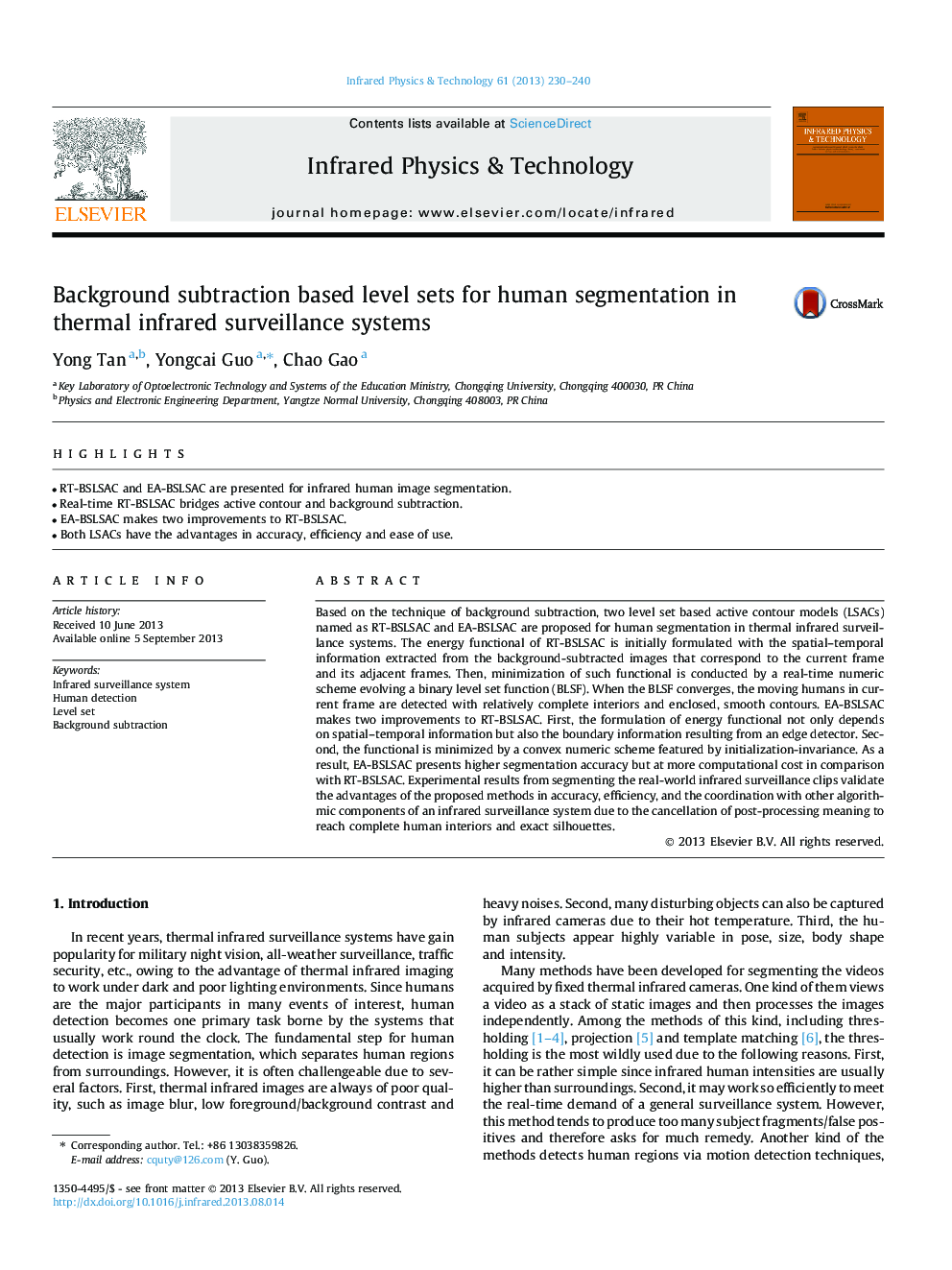| کد مقاله | کد نشریه | سال انتشار | مقاله انگلیسی | نسخه تمام متن |
|---|---|---|---|---|
| 1784423 | 1524125 | 2013 | 11 صفحه PDF | دانلود رایگان |
عنوان انگلیسی مقاله ISI
Background subtraction based level sets for human segmentation in thermal infrared surveillance systems
دانلود مقاله + سفارش ترجمه
دانلود مقاله ISI انگلیسی
رایگان برای ایرانیان
کلمات کلیدی
موضوعات مرتبط
مهندسی و علوم پایه
فیزیک و نجوم
فیزیک اتمی و مولکولی و اپتیک
پیش نمایش صفحه اول مقاله

چکیده انگلیسی
Based on the technique of background subtraction, two level set based active contour models (LSACs) named as RT-BSLSAC and EA-BSLSAC are proposed for human segmentation in thermal infrared surveillance systems. The energy functional of RT-BSLSAC is initially formulated with the spatial-temporal information extracted from the background-subtracted images that correspond to the current frame and its adjacent frames. Then, minimization of such functional is conducted by a real-time numeric scheme evolving a binary level set function (BLSF). When the BLSF converges, the moving humans in current frame are detected with relatively complete interiors and enclosed, smooth contours. EA-BSLSAC makes two improvements to RT-BSLSAC. First, the formulation of energy functional not only depends on spatial-temporal information but also the boundary information resulting from an edge detector. Second, the functional is minimized by a convex numeric scheme featured by initialization-invariance. As a result, EA-BSLSAC presents higher segmentation accuracy but at more computational cost in comparison with RT-BSLSAC. Experimental results from segmenting the real-world infrared surveillance clips validate the advantages of the proposed methods in accuracy, efficiency, and the coordination with other algorithmic components of an infrared surveillance system due to the cancellation of post-processing meaning to reach complete human interiors and exact silhouettes.
ناشر
Database: Elsevier - ScienceDirect (ساینس دایرکت)
Journal: Infrared Physics & Technology - Volume 61, November 2013, Pages 230-240
Journal: Infrared Physics & Technology - Volume 61, November 2013, Pages 230-240
نویسندگان
Yong Tan, Yongcai Guo, Chao Gao,